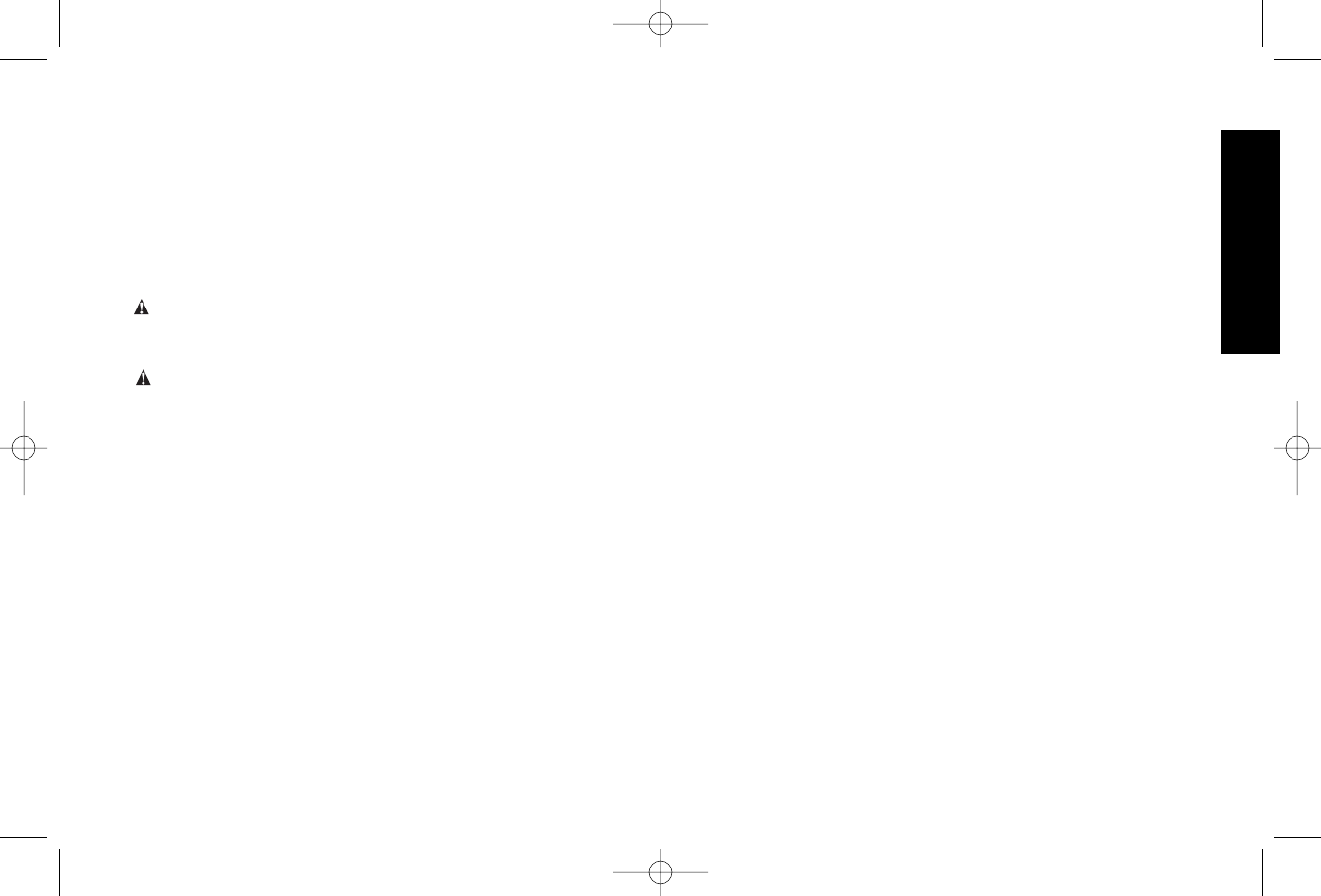
English
9
Operating Procedures
PRE-START CHECKLIST
1. Ensure that the ON/OFF lever switch is in the OFF position.
2. Ensure that the tank is drained so that moisture, dirt, etc. can be
eliminated.
3. Ensure that the tank pressure gage reads 0 PSI.
4. Ensure that the safety and drain valves are functioning properly.
5. Ensure that the drain valve is closed.
6. Check the oil level in the pump.
NOTE: The air compressor is shipped without oil in crankcase. Add
oil before using.
7. Ensure that all guards and covers are in place and securely
mounted. Ensure that all labels are legible. Do not use the
compressor until all these items have been verified.
START-UP
1. Ensure that the ON/OFF lever on the pressure switch is in the
OFF position.
2. Pull out and turn the regulator knob counterclockwise until it is ful-
ly closed. Push in to lock. The regulated pressure gage should
read 0 PSI.
3. Plug the power cord into a grounded outlet.
4. Move the ON/OFF lever to the ON position. Allow the compressor
to reach cut-out pressure limit. This pressure will cause the
compressor to shut down automatically.
NOTE: When the compressor is started and the tank is empty, an
air noise will be heard. This noise is normal as the cold start valves
are allowing air to escape from the air compressor lines. This noise
will also be heard when the unit shuts off because the unloader
valve, located in the pressure switch, is purging air from the lines.
5. Attach the hose and accessory.
TRANSPORTING
When transporting the compressor in a vehicle, trailer, etc., ensure
that the tanks are drained and the unit is secured. Use care when
driving to avoid tipping the unit over in the vehicle. Damage can occur
to the compressor or surrounding items if the compressor is tipped.
MOVING
When moving the compressor, grasp the handle grip and carry the
compressor as close to your body as possible.
WARNING: Ensure proper footing and use caution when carrying
compressor to avoid a loss of balance.
Air Inlet Filter
CAUTION: Do not operate without the air inlet filter.
General Requirements
The piping, fittings, receiver tank, etc. must be certified safe for at
least the maximum working pressure of the unit. Use hard welded
or threaded steel or copper pipes, cast iron fittings and hoses that
are certified safe for the unit’s discharge pressure and temperature.
Use pipe thread sealant on all threads and tighten joints thoroughly
to prevent air leaks. DO NOT USE PVC PLASTIC.
CONDENSATE DISCHARGE PIPING
To install a condensate discharge line, use piping at least one size
larger than the connection. Connect the piping so that it is secured
tightly and is routed to a suitable drain point. Use as short and direct
a pipe as possible. Condensate must be disposed of in accordance
with local, state, and federal laws and regulations.
NOTE: All compressed air systems generate condensate that
accumulates in any drain point (e.g. tanks, filter, aftercoolers and
dryers). This condensate contains lubricating oil and/or substances
which may be regulated and must be disposed of in accordance with
local, state, and federal laws and regulations.
5135175-02,01.qxd 3/30/05 8:32 PM Page 9


















